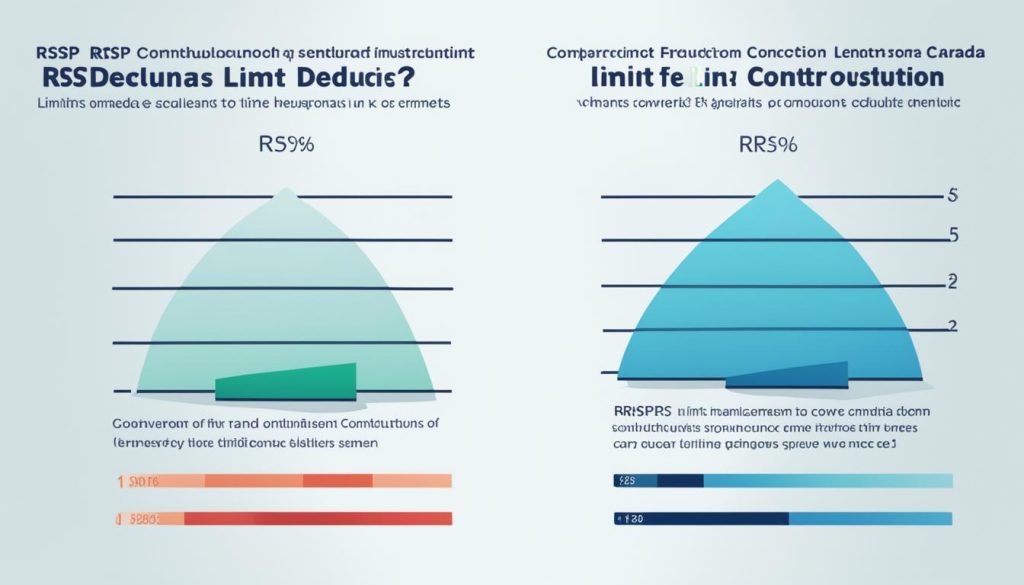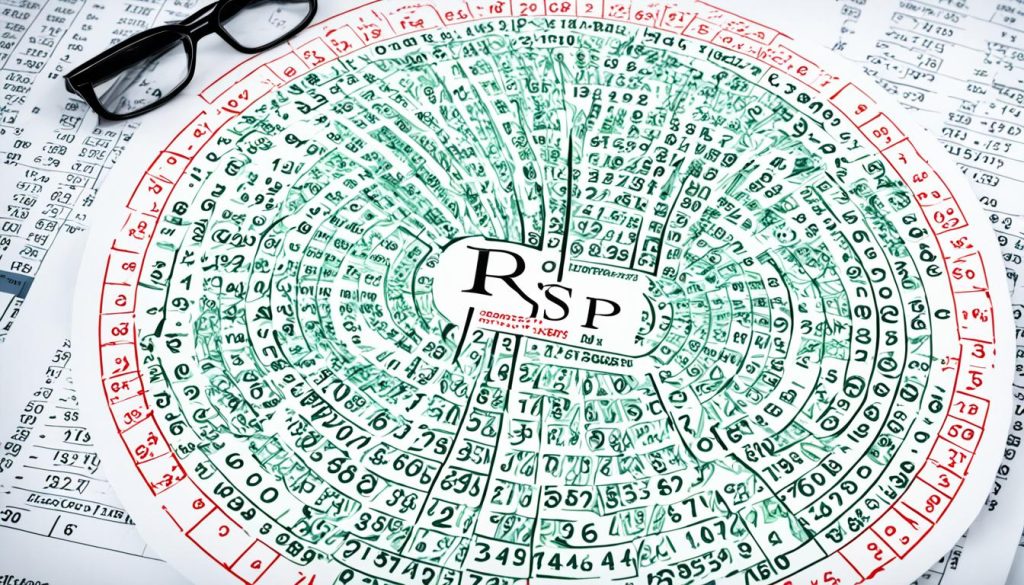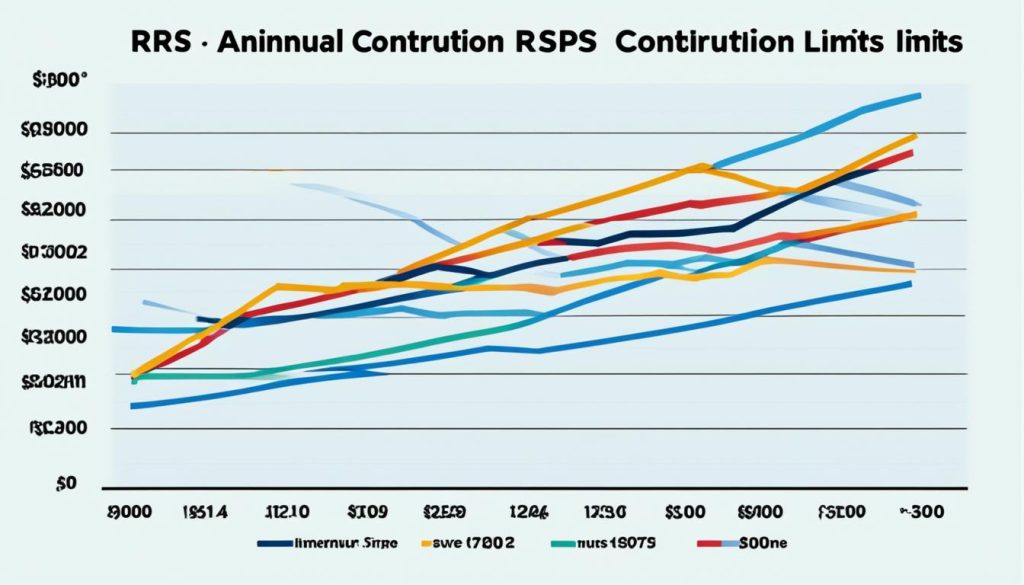If you’re a Canadian taxpayer looking to maximize your savings and reduce your taxable income, understanding the RRSP deduction limit is crucial. The Registered Retirement Savings Plan (RRSP) is a popular savings vehicle for Canadians, allowing them to contribute towards their retirement while enjoying the benefits of tax deductions. But how much can you contribute to your RRSP? And what are the rules and calculations surrounding the deduction limit?
In this article, we’ll answer these questions and provide you with a clear understanding of what is RRSP deduction limit in Canada. Whether you’re a beginner or a seasoned investor, this information is vital for planning your financial future. So, let’s dive in and explore the intricacies of RRSP contribution rules and the handy RRSP deduction calculator.
What is RRSP Deduction Limit in Canada?
The RRSP deduction limit and the RRSP contribution limit are related but distinct concepts when it comes to registered retirement savings plans (RRSPs) in Canada. Understanding the difference between these two limits is crucial for effectively managing your retirement savings.
RRSP Deduction Limit vs. Contribution Limit
The RRSP contribution limit sets the maximum amount of money you can contribute to your RRSP in a given year. For 2023, this limit is 18% of your previous year’s earned income or $30,780, whichever is lower. The RRSP deduction limit, on the other hand, determines the maximum amount of those contributions that you can claim as a tax deduction on your income tax return.
It’s important to note that the deduction limit and contribution limit may not always be the same. You can contribute more to your RRSP than your deduction limit, but the excess contributions won’t be eligible for a tax deduction in the current year. These excess contributions can be carried forward and claimed in future years when you have the available deduction room.
The RRSP deduction limit is calculated annually by the Canada Revenue Agency (CRA) based on your income, pension adjustments, and any unused deduction room from previous years. You can find your personal RRSP deduction limit on your Notice of Assessment or by using the CRA’s online tools.

Understanding the distinction between the RRSP deduction limit and the contribution limit can help you maximize your tax savings and retirement savings strategies. By knowing your personal limits, you can make informed decisions about how much to contribute to your RRSP and when to claim the deductions on your tax return.
Calculating Your RRSP Deduction Limit
Determining your Registered Retirement Savings Plan (RRSP) deduction limit is a crucial step in managing your retirement savings. The Canada Revenue Agency (CRA) generally calculates your RRSP deduction limit based on a formula that takes into account several factors.
1. How is Your RRSP Deduction Limit Determined?
Your RRSP deduction limit is typically calculated as follows:
- Your unused RRSP deduction room at the end of the preceding year
- Plus the lesser of:
- 18% of your earned income in the previous year
- The annual RRSP limit (for 2024, the limit is $31,560)
- Less your pension adjustment (PA), your prescribed amount for connected persons, and your net past service pension adjustment (PSPA)
2. Factors Affecting Your RRSP Deduction Limit
Your RRSP deduction limit can be influenced by several factors, including:
- Contributions to your employer’s pension plan, which can reduce your RRSP deduction limit through the pension adjustment (PA)
- Unused contribution room from previous years, which can be carried forward to increase your current year’s deduction limit
- Other deductions or credits claimed on your tax return, such as the Home Buyers’ Plan or Lifelong Learning Plan, which can impact your overall RRSP deduction limit
It’s important to keep track of your RRSP deduction limit and make informed decisions about your retirement savings to maximize your tax benefits. By understanding the factors that affect your RRSP deduction limit, you can better plan your contributions and ensure you’re taking full advantage of your retirement savings options.

The image above illustrates the key components used in calculating your RRSP deduction limit, providing a visual representation of the factors involved.
Who Can Contribute to an RRSP?
In Canada, the eligibility criteria for contributing to a Registered Retirement Savings Plan (RRSP) are straightforward. Primarily, you can contribute to your RRSP until December 31st of the year you turn 71 years of age, as long as you have an available RRSP deduction limit. This means that regardless of your age, as long as you have earned income and RRSP contribution room, you can actively contribute to your retirement savings.
Additionally, you can also contribute to your spouse’s or common-law partner’s RRSP until December 31st of the year they turn 71 years old. This flexibility allows couples to strategize and optimize their RRSP contributions for the best tax benefits. It’s important to note that there is no minimum age requirement for opening an RRSP, although some financial institutions may have their own policies regarding the age of majority in your province.
To determine your RRSP who can contribute to rrsp and rrsp eligibility, you can refer to your Notice of Assessment from the Canada Revenue Agency (CRA). This document outlines your available RRSP contribution room, which is calculated based on your previous year’s earned income. By understanding your RRSP contribution limits, you can plan your retirement savings effectively and take advantage of the tax-deferred growth opportunities that an RRSP offers.
| RRSP Contribution Limit | 2023 | 2024 | 2025 |
|---|---|---|---|
| Maximum Annual Limit | $30,780 | $31,560 | $32,490 |
| Carry Forward Unused Room | Yes | Yes | Yes |
| Excess Contribution Tax | 1% per month | 1% per month | 1% per month |
By understanding the who can contribute to rrsp and rrsp eligibility requirements, you can take the necessary steps to maximize your RRSP contributions and enjoy the long-term benefits of tax-deferred retirement savings.

Contribution Deadlines and Penalties
Canadians have a specific deadline to contribute to their Registered Retirement Savings Plans (RRSPs) each year. The RRSP contribution deadline for the 2023 tax year is February 29, 2024. You can also contribute to your RRSP until December 31st of the year you turn 71 years old.
1. RRSP Contribution Deadline
The deadline to contribute to your RRSP for the 2023 tax year is February 29, 2024. This means you have until the last day of the second month after the end of the tax year to make your RRSP contributions. Contributions made within the first 60 days after December 31st will be included in the following year’s tax return.
2. Penalties for Excess Contributions
If you contribute more than your RRSP deduction limit by more than $2,000, you’ll generally have to pay a tax of 1% per month on the excess contributions. However, Canadians who are 19 years and older can have $2,000 extra in their RRSP if they accidentally contribute more than the allowable amount, and they won’t receive a tax deduction for the excess contribution.
The tax payment deadline for excess contributions is within 90 days after the end of the year in which the excess contributions occurred. Late filing penalties for the T1-OVP return can amount to 5% of the balance owing plus 1% for each month the return is late, up to a maximum of 12 months. Interest is also compounded daily on unpaid tax and unpaid late filing penalties, starting from the 91st day of the following year.
In certain circumstances, the Canada Revenue Agency (CRA) may waive or cancel the tax on excess contributions. This requires a written request and filling out Form RC2503. Voluntary disclosure can also be made if information provided to the CRA is incorrect or incomplete, subject to specific eligibility criteria under the Voluntary Disclosures Program (VDP).

Deducting RRSP Contributions on Your Tax Return
When it comes to managing your finances, claiming tax deductible RRSP contributions is a crucial step in maximizing your tax savings. The good news is that you can claim a deduction for contributions you make to your RRSP, PRPP, or SPP, as well as any contributions you make to your spouse’s or common-law partner’s RRSP or SPP, and any unused RRSP, PRPP, or SPP contributions from a previous year.
Claiming RRSP Deductions
One of the key benefits of contributing to an RRSP is that the contributions are tax deductible, which means they can reduce your taxable income dollar-for-dollar. This can result in significant tax savings, especially for those in higher tax brackets. It’s important to note that you don’t need to claim RRSP contributions in the year they are made; you can carry forward some or all of the contributions to a future year when your taxable income may be higher, allowing you to maximize your tax deductions.
To claim your RRSP deductions, you’ll need to report the amount of your contributions on your tax return. This information can be found on the tax slips (such as the T4 and T4RSP) that you receive from your RRSP issuer. By claiming RRSP deductions, you can effectively reduce your taxable income, leading to a lower tax bill and potentially a larger tax refund.
It’s important to note that the RRSP contribution deadline for the 2023 tax year is February 29, 2024. Contributions made within the first 60 days of the calendar year (i.e., between January 1 and March 1) can be claimed on the previous year’s tax return. This flexibility allows you to optimize your tax planning and claim RRSP deductions in the most advantageous way.
Remember, prudent financial planning and taking advantage of tax-deductible opportunities, such as claiming RRSP deductions, can help you achieve your long-term financial goals and build a more secure future.
Transfers and Special Circumstances
In Canada, there are several ways to manage and transfer funds to your Registered Retirement Savings Plan (RRSP). Understanding the nuances of these special circumstances can help you maximize your retirement savings and navigate the various options available.
1. Transferring Amounts to Your RRSP
Amounts you transfer directly to your RRSP, Pooled Registered Pension Plan (PRPP), and Specified Pension Plan (SPP) do not affect your RRSP deduction limit. However, you may need to include an amount in your income and claim an offsetting deduction, depending on the type of transfer.
2. Home Buyers’ Plan and Lifelong Learning Plan
The Home Buyers’ Plan and Lifelong Learning Plan allow you to withdraw funds from your RRSP for the purpose of buying a first home or funding your education, respectively. These special withdrawal programs offer tax-free access to your RRSP savings, provided you meet the eligibility requirements and follow the repayment rules.
Furthermore, the deceased individual’s legal representative can make contributions to the surviving spouse’s or common-law partner’s RRSP and SPP within the year of death or the first 60 days after the end of that year. This ensures the continued growth of retirement savings for the surviving spouse or partner.
By understanding the various transferring amounts to rrsp, home buyers plan, and lifelong learning plan options, Canadians can optimize their retirement savings and take advantage of the unique opportunities available within the RRSP framework.
Conclusion
The RRSP deduction limit in Canada is a critical concept for individuals looking to maximize their retirement savings and minimize their tax burden. By understanding the nuances of the RRSP deduction limit, including how it is calculated, who can contribute, the deadlines and penalties involved, and the options for deducting contributions, Canadians can develop an effective strategy to reach their financial goals.
Whether you are just starting to save for retirement or are looking to optimize your existing RRSP, staying informed about the RRSP deduction limit Canada can help you make the most of this valuable tax-advantaged investment tool. By considering factors such as your earned income, pension adjustments, and unused contribution room from previous years, you can ensure that you are maximizing your RRSP contributions and deductions to achieve your long-term financial objectives.
Ultimately, the RRSP deduction limit is a crucial concept that every Canadian should understand to make the most of their retirement savings and reduce their tax burden. By staying informed and proactive, you can take control of your financial future and build a secure retirement.
FAQ
1. What is the RRSP deduction limit in Canada?
The RRSP deduction limit is the maximum amount of money you can contribute to your RRSP and claim as a tax deduction on your income tax return. It’s the lesser of 18% of your income from the previous year or the annual limit set by the Canada Revenue Agency (CRA), up to a maximum of $30,780 for the 2023 tax year.
2. What is the difference between the RRSP deduction limit and the RRSP contribution limit?
The RRSP deduction limit and the RRSP contribution limit are related but not the same thing. The RRSP contribution limit sets a cap on the maximum amount of money you can contribute to your RRSP in a given year. The RRSP deduction limit determines the maximum amount of those contributions that you can claim as a tax deduction on your income tax return.
3. How is your RRSP deduction limit determined?
The Canada Revenue Agency generally calculates your RRSP deduction limit as follows: your unused RRSP deduction room at the end of the preceding year, plus the lesser of 18% of your earned income in the previous year or the annual RRSP limit, less your pension adjustment, your prescribed amount for connected persons, and your net past service pension adjustment.
4. Who can contribute to an RRSP?
You can contribute to your RRSP until December 31st of the year you turn 71 years of age, as long as you have an available RRSP deduction limit. You can also contribute to your spouse’s or common-law partner’s RRSP until December 31st of the year that they turn 71 years of age.
5. What are the deadlines and penalties for RRSP contributions?
The RRSP contribution deadline for the 2023 tax year is February 29, 2024. If you contribute more than your RRSP deduction limit by more than $2,000, you’ll generally have to pay a tax of 1% per month on the excess contributions. However, Canadians who are 19 years and older can have $2,000 extra in their RRSP if they accidentally contribute more than the allowable amount, and they won’t receive a tax deduction for the excess contribution.
6. How can you claim RRSP deductions on your tax return?
You can claim a deduction for contributions you made to your RRSP, PRPP or SPP, as well as contributions you made to your spouse’s or common-law partner’s RRSP or SPP, and any unused RRSP, PRPP or SPP contributions from a previous year. RRSP contributions don’t need to be claimed in the year of the contribution, as you can carry forward some or all of the contributions to a future year, ideally when your taxable income is higher.
7. How do transfers and special circumstances affect your RRSP deduction limit?
Amounts you transfer directly to your RRSP, PRPP, and SPP do not affect your RRSP deduction limit. However, you may need to include an amount in income and claim an offsetting deduction, depending on the type of transfer. The Home Buyers’ Plan and Lifelong Learning Plan allow you to withdraw funds from your RRSP for the purpose of buying a first home or funding your education, respectively. The deceased individual’s legal representative can also make contributions to the surviving spouse’s or common-law partner’s RRSP and SPP within the year of death or the first 60 days after the end of that year.




